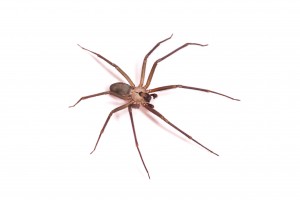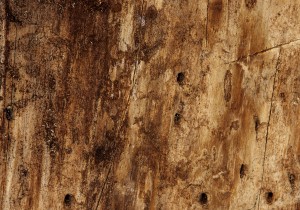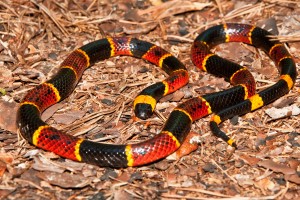 The beauty, vastness, and mystical nature of the Everglades is something that should be experienced by everyone in real life. Beautiful flowers. Mangrove forests. Endangered creatures. Even if you’re lucky enough to visit this special place, you can’t take it home with you. However, thanks to talented directors, people can bring the Everglades into their home. Several documentaries have been made throughout the years about the Everglades to shed light on environmental issues, showcase the beauty and importance of the area, and profile plant life, wildlife, and marine life within. No matter where someone lives, he or she can have an up-close-and-personal look into he Everglades from the comfort of his or her own living room.
The beauty, vastness, and mystical nature of the Everglades is something that should be experienced by everyone in real life. Beautiful flowers. Mangrove forests. Endangered creatures. Even if you’re lucky enough to visit this special place, you can’t take it home with you. However, thanks to talented directors, people can bring the Everglades into their home. Several documentaries have been made throughout the years about the Everglades to shed light on environmental issues, showcase the beauty and importance of the area, and profile plant life, wildlife, and marine life within. No matter where someone lives, he or she can have an up-close-and-personal look into he Everglades from the comfort of his or her own living room.
Here are a few documentaries that highlight the Everglades:
National Parks Adventure
This film was released in February 2016 and is a MacGillivray Freeman Film. It is narrated by Robert Redford. This film doesn’t solely focus on the Everglades, but it is still featured one of the “awe-inspiring, jaw-dropping places that belong to us all.” This film runs at 40 minutes.
Water’s Journey: Everglades
This is a PBS film split into two episodes: Restoring Hope and Currents of Change. Restoring Hope talks about the endless draining and development in the Everglades that have almost caused the entire ecosystem there to collapse. This episode speaks of a massive restoration plan that’s has been initiated to protect the wetland. In both episodes, a team of scientists and explorers discuss what has happened to the Everglades, the importance of this wetland, and discuss whether the largest restoration plan ever attempted will succeed. This film was produced by Karst Productions.
The Unseen Everglades: Inside A Legendary Wilderness
This is a one-hour film produced by Tropic Moon Media. This film examines the complex ecosystem of the Everglades, it’s role in Florida’s history, and challenges the wetland faces today. Charles J. Kropke,
a South Florida author and adventurer, narrates the film. He has spent many years exploring and researching the Everglades. In the film, he takes viewers through the entire ecosystem, and introduces them to all the people whose lives have been affected by the wetland.
Exploring the Everglades
If you just finished watching one of these films, there’s a good chance you’d like to see this beautiful wetland for yourself. The best way to experience the Everglades is on an airboat ride; these rides will give you a once-in-a-lifetime personal experience of seeing this fragile ecosystem. To schedule your airboat tour, call Captain Mitch’s Everglades Airboat tours at 239-695-3377.
 Spiders can be found anywhere on Earth, but most people prefer that these creepy crawlers be outside far away. In the Everglades, there are thousands upon thousands spread across the 1.5 million acres of wetlands. To be more exact, there are around 20,000 spiders per acre of land in the Everglades. Most of these spiders are so small, you cannot see them. Being such a warm climate, spiders enjoy and thrive in Southern Florida. While exploring the Everglades, people often get a glimpse of spiders on their webs.
Spiders can be found anywhere on Earth, but most people prefer that these creepy crawlers be outside far away. In the Everglades, there are thousands upon thousands spread across the 1.5 million acres of wetlands. To be more exact, there are around 20,000 spiders per acre of land in the Everglades. Most of these spiders are so small, you cannot see them. Being such a warm climate, spiders enjoy and thrive in Southern Florida. While exploring the Everglades, people often get a glimpse of spiders on their webs. The Everglades is a distressed ecosystem. Usually, climate change, pollution, and human development come to mind when the topic of a hurting wetland comes up. Sadly, the Everglades are currently facing another threat to its future: a fungus. This fungus goes by the name Laurel Wilt, and it is a tree disease that showed up in the Everglades in 2011.
The Everglades is a distressed ecosystem. Usually, climate change, pollution, and human development come to mind when the topic of a hurting wetland comes up. Sadly, the Everglades are currently facing another threat to its future: a fungus. This fungus goes by the name Laurel Wilt, and it is a tree disease that showed up in the Everglades in 2011. Twenty three snake species live in the Everglades. Of these 23, only four are venomous. Many people have a fear of snakes, and with several being poisonous, it makes sense why people prefer to stay away from these slithering creatures. However, these reptiles are an important part of the ecosystem of the Everglades. They control and prey on the number of rodents, invertebrates and other snakes. These snakes are also a food source for birds and alligators.
Twenty three snake species live in the Everglades. Of these 23, only four are venomous. Many people have a fear of snakes, and with several being poisonous, it makes sense why people prefer to stay away from these slithering creatures. However, these reptiles are an important part of the ecosystem of the Everglades. They control and prey on the number of rodents, invertebrates and other snakes. These snakes are also a food source for birds and alligators.





